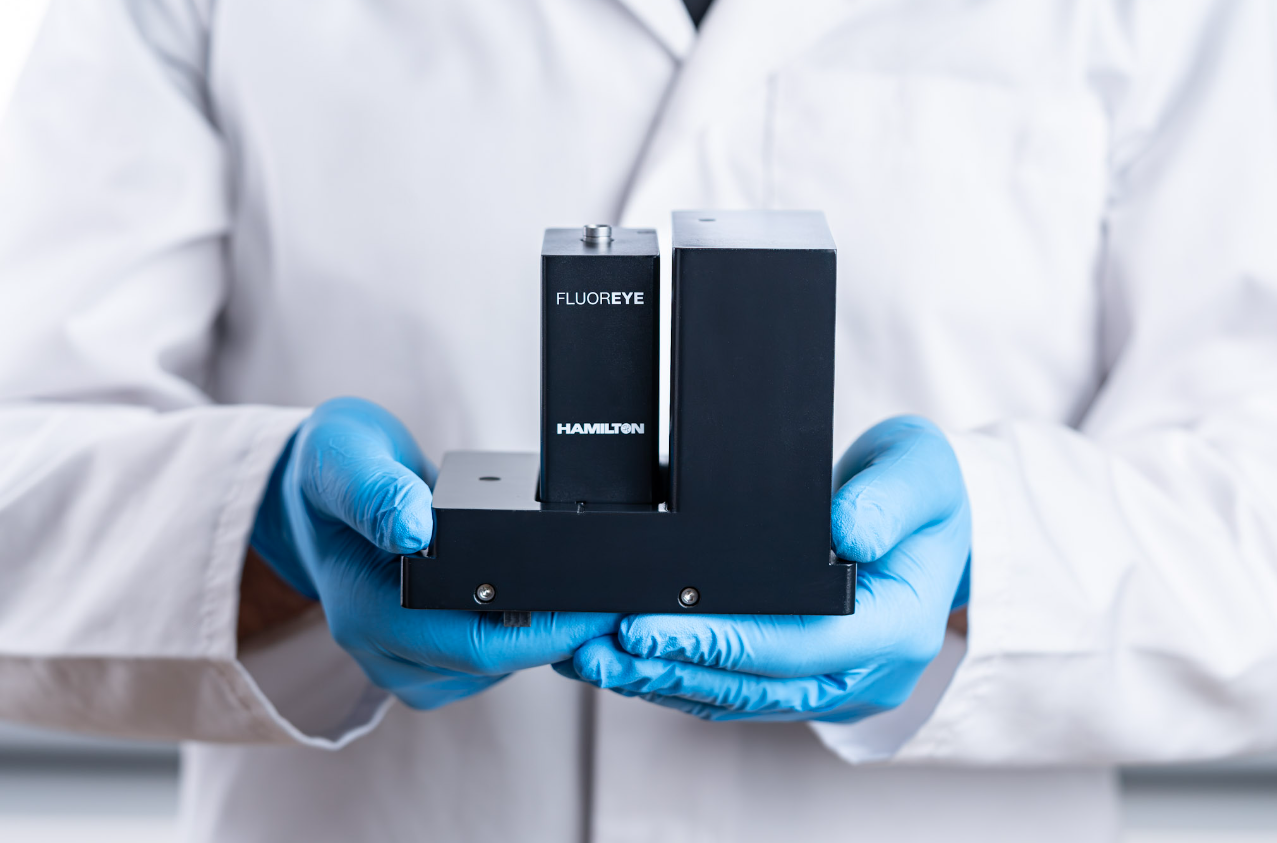Liquid handling workflow innovation creates wow effect

Posted by:
Konstantin Lutze
Published on:
Mar 22, 2024
Groundbreaking innovations take time and involve considerable project risks. We use the experience gained from countless automation projects to tackle new developments with a special team that go beyond the scope of normal development contracts. Hamilton Robotics' pioneering Fluoreye® fluorescence detection module is an example of how life science companies can benefit from our innovations.
Determining the quality of nucleic acid samples directly in the liquid handler and, thus, fully integrated into the specific workflows of laboratory applications clearly meets a great need in the genomics environment. "I have rarely seen such a wow effect. Both end customers and partners who use our liquid handlers as a robotics platform were simply thrilled," says Marco Trinkler, Director of Application Management of the Robotics Business Unit at Hamilton Robotics Bonaduz, summarizing the reactions at the first presentation of Fluoreye®.
Customer added value enables competitive advantage
For Hamilton Robotics, the Fluoreye® innovation of our engineers is an important building block for continued above-average growth. To this end, the liquid handling global market leader is systematically looking for ways to expand the functionalities of its pipetting robots. With the reliable and extremely accurate determination of the concentration of nucleic acid samples by fluorescence detection, Hamilton Robotics can now open up "a thousand new possibilities" for its customers, according to the reaction of a potential customer after the presentation.
Thanks to Fluoreye®, it is now possible for the first time to add a detection option to existing systems quickly, easily and cost-effectively. Previously, this required complex add-ons to integrate an expensive reader, whereas Fluoreye® is ready for use in approx. 2 hours and therefore saves considerable time and money.
Without a contract up to the functional model
For an engineering specialist like HSE•AG, the development history of Fluoreye® seems unusual at first glance. The compact module is not the product of a development contract.
Rather, we developed Fluoreye® independently up to the level of a functional model that had already been shrunk to the necessary, small dimensions. This was presented to Hamilton Robotics as one of several concepts during a workshop.
Time and risks go beyond the scope of the project
The path from identifying a challenge to generating possible solutions and from the initial evaluation of market opportunities to creating a fully functional prototype is a multi-step process. It usually takes many months or even years. Within the framework of a "normal" development project, there is not only a lack of time. The risk of getting stuck in a dead end is also far too great for most clients.
Innovation Guild drives new developments
We therefore address such challenges with our special innovation team, the Innovation Guild. It constantly investigates where there are gaps in automation processes, researches new technologies, outlines solution variants, and evaluates the market opportunities.
If a component has economic potential, it is ultimately developed to the level of a mature functional model, which is then offered to interested life science companies for evaluation. In this way, they cannot only massively reduce their development risk. They are also in a position to launch a new product much more quickly than if they were to tackle a major new development themselves.
From revenue sharing to OEM through to asset transfer.
To take advantage of our innovations, life science companies have a comprehensive range of different business models at their disposal. Hamilton Robotics, for example, has opted for an exclusive license. The company produces the module itself and also has complete freedom in pricing. Because we have jointly agreed on turnover-dependent license fees, we also benefit from Fluoreye's® success. This mutual profit sharing strengthens the long-term innovation partnership between Hamilton Robotics and us. This partnership is expected to result in further products with a wow effect.
Other in-house developments, such as the UV spectroscopy module, eviDense UV, are also offered to interested life science companies as OEM products. In this model, we take over the supply chain and change management and deliver the components ready for use to the life science company. As a further variant, a complete asset transfer is also possible, in which a partner takes over all rights to the innovation.
Innovation power exclusively for manufacturer success
We focus our know-how and commitment entirely on the success of our OEM customers. Fluoreye® impressively demonstrates how our "good ideas" only become successful products through the combination of our engineering and application competencies with the specific market access know-how of a life science company.
Learn more about the Fluoreye® project and its history.
More information about the possibilities of Fluoreye® can also be found on Hamilton Robotics' product webpage.
DNA quality measurement as OEM module
With eviDense UV, we have developed the next innovation for determining the quality of nucleic acid samples using the well-established UV optical density measurement, but with a completely new and integrated process. The liquid handler module is now available for evaluation by interested life science companies as an OEM component.
Learn more about the possibilities and business models of eviDense UV.
